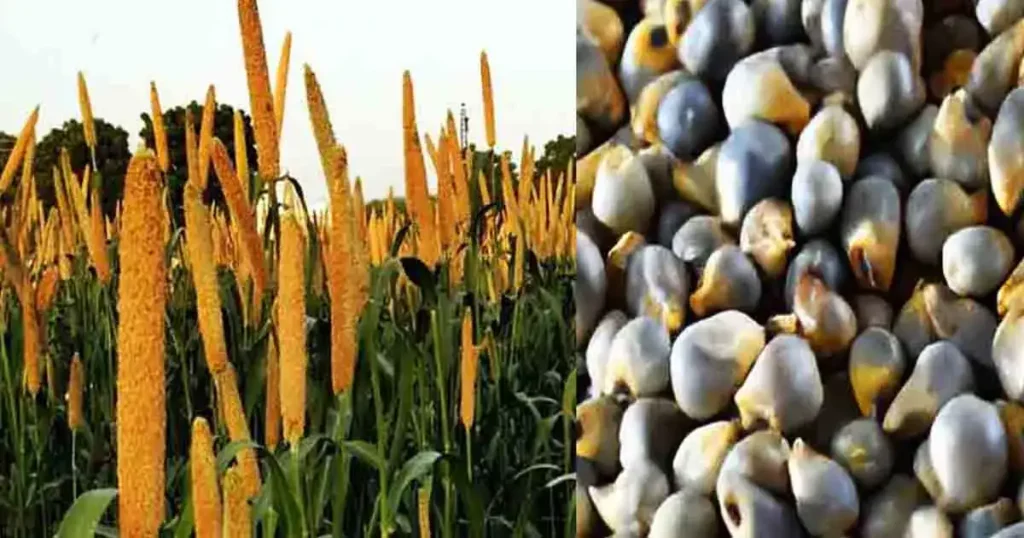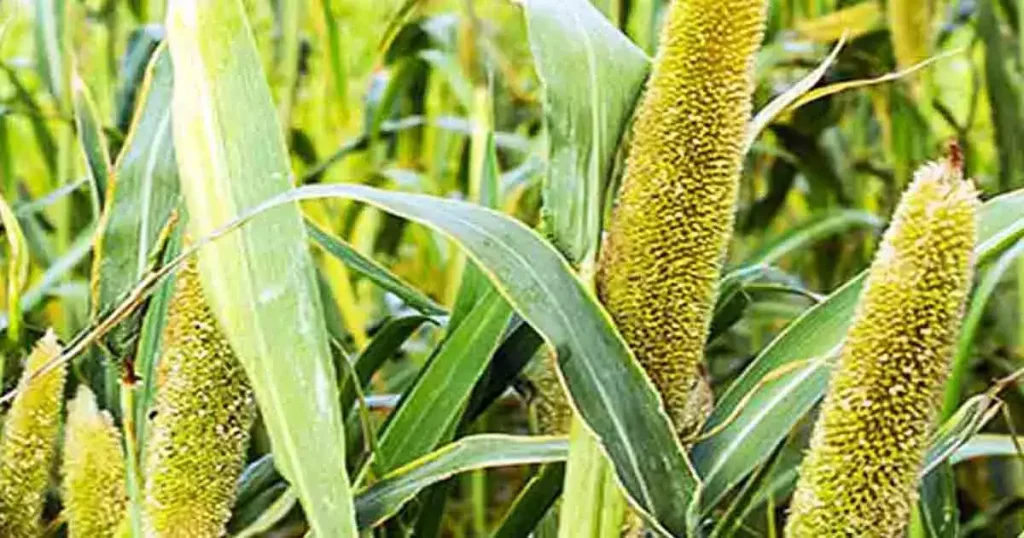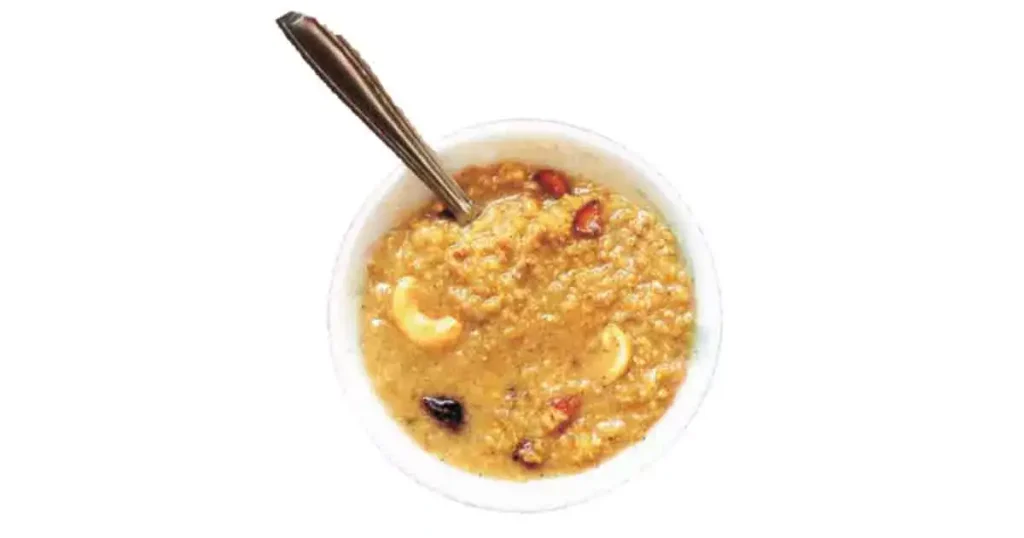It is a faster-growing crop that comes under the E.frumentasea species. It is also named Japanese millet. Barnyard is widely grown in Nepal, India, and Pakistan. This crop is cultivated on marginal lands where other crops and rice do not grow well. It has a nutty and sweet flavor. You can cook barnyards with different spices quickly. It is delicious and also provides so many health benefits.

The nutrient content, availability, and adaptability make barnyard millet a coarse grain or typical cereal. It has a similar flavor to broken rice. It is spherical and has little white grain. It is smaller than Sabudana and more solid than Rawa.
This article is all about barnyard millet, including the topics like – barnyard millet In Tamil, its cost, nutritional value, health benefits of barnyard millet, popularity, recipes, availability, and many more.
| English name | Barnyard millet |
| Tamil name | Kuthiraivolly or Kuthiraivaali |
| Kingdom | Plantae |
| Species | E.frumentasea |
| Family | Poaceae |
| Subfamily | Panicoideae |
| Order | Poales |
| Genus | Echinochloa |
Barnyard millet in Tamil name
Kuthiraivolly is the Tamil name of barnyard millet. Barnyard millet is the English and most used name. But in the typical Tamil-telling areas like Tamil Nadu, Kerala, Andhra Pradesh, etc., people don’t understand the English name. You must communicate with them using the Tamil word Kuthiraivolly or Kuthiraivaali. But people understand the English name of the city area or big restaurants. So you don’t face any difficulty.
Nutritional value of barnyard millet
100 grams of barnyard millet provides –
| Nutrients | Quantity |
|---|---|
| Calories | 300 kcal |
| Protein | 11 grams |
| Fat | 3.6 grams |
| Dietary fiber | 13.6 grams |
| Iron | 18.6 mg |
| Calcium | 22 mg |
| Phosphorus | 281 mg |
| Magnesium | 83 mg |
| Carbohydrates | 55 grams |
| Vitamin B1 | 0.33 mg |
| Vitamin B2 | 0.10 mg |
| Vitamin B3 | 4.2 mg |
You can get a lot of nutrients from barnyard millets. Barnyard millet is rich in fiber, iron, and protein content. A pregnant woman can consume 100 grams of this millet variety. It provides 67% of the daily folate limit and 100% of the daily iron allowance. Barnyard millet contains a considerable amount of calcium. It helps to protect your teeth and bone.
The nutritional value of barnyard millet, which is about 100 grams –
Low-calorie content
This millet variety has a very low-calorie range compared to other cereals. It is also high in highly digestive protein. You don’t feel heaviness after eating barnyard millet, but the feeling is energized and light.
High in fiber
Barnyard millet contains both insoluble and soluble fibers. So it is known as a fantastic dietary fiber source. One serving of this variety of millet can provide 2.4 grams of fiber. Compared to other cereals, barnyard millet contains much more amount of fiber. It helps to reduce bloating, constipation, flatulence, and cramps due to high fiber content.
The glycemic index is low
Because of the modest carbohydrate content, this millet variety has low GI ( glycemic index ). Barnyard millet takes more time to digest. For this reason, doctors suggest consuming Barnyard for cardiovascular and diabetes patients. This millet has become a popular superfood for diabetic patients worldwide.
Gluten-free
Like any other millet, Barnyard is also gluten-free. Barnyard millet is one of the best options for those who want to follow a gluten-free diet ( they can not eat food prepared using barley, rye, or wheat ) or have issues with gluten sensitivity. Barnyard is delicious, readily available, and fast to prepare. It is a healthy, excellent alternative for corn, maize, and other millets.
Rich in iron
According to some research on the nutritional value of millet, the iron content of some barnyard millet is very high ( 100 grams of raw millet contains 18.6 mg of iron ). Barnyard is famous as the most elevated iron container of all grain and millet products. Vegetarians can consider this millet variety as a valuable iron provider.
Health benefits of barnyard millet

1. Barnyard millet helps in weight loss
Nowadays, people live a busy lifestyle. Nobody has sufficient time to prepare food every day. In this case, choosing fried food and packaged food become more straightforward choices.
But to stay active and healthy and fuller and longer, you must follow a nutritious diet, including nutrient-dense meals full of protein and fiber. Barnyard may help to cut down the calories from your diet, but you don’t feel hungry at the same time, which enables you to lose some weight.
At the same time, barnyard millet is filling, calorie efficient, and tasty. The fiber content satisfies your hunger. In this way, your food desire and calorie intake reduces. The low glycemic index and complex carbohydrates of Barnyard help to control body weight and blood sugar.
2. Barnyard is helpful for diabetic patients
A significant amount of starch is present in Barnyard or Kuthiraivolly. But the sugar level of this millet variety is very low. You can consider Barnyard a fantastic food for diabetic patients for these reasons. According to some surveys, it is ok to eat a minimal glycemic index food for diabetic people.
Diabetic patients should swap white rice with barnyard millet to avoid blood sugar spikes. According to another survey, the group of people who consume barnyard millet has low diabetes incidence rates compared to other groups who consume other grains.
3. Barnyard millet fights against free radicals
Kuthiraivolly, or Barnyard, is an anti-oxidant-rich millet. Antioxidants help to fight against free radicals to defend your body from harmful effects. Free radicals are linked to chronic illnesses, early aging, and oxidative stress.
Carbohydrates, tannins, alkaloids, flavonoids, steroids, phenols, and glycosides are some medicinal substances present in barnyard millet. These are helpful for some functions like wound healing, antibacterial, anti-inflammatory, anti-carcinogenic, and antioxidant.
4. Barnyard millet acts as a probiotic and prebiotic
As you know, insoluble and soluble fibers are the remarkable contents of barnyard millet, which are beneficial for intestinal health. Gut bacteria like actinobacteria, bifid species, and lactobacillus acidophilus are developed by encouraging insoluble fiber components of barnyard millet.
This process makes Barnyard or Kuthiraivolly a fantastic stimulant that you can add to your diet. You can find vitamin B12 and probiotics in fermented barnyard millet. The probiotic component helps to prepare idli batter, porridge, and dosa.
5. Barnyard millet is good for heart health
An abundant amount of magnesium is found in barnyard millet. Magnesium helps to support heart health. As a result, it also helps to regulate blood pressure.
Improvement in the circulatory system and lowering blood pressure are the two main strategies to keep safe cardiovascular health. Kuthiraivolly, or barnyard millet, is one of the wholesome and nutritious grains you can add to your regular diet to maintain and safeguard your heart health.
6. Barnyard millet helps to control cholesterol
A high amount of magnesium is present in barnyard millet, which helps to maintain your blood pressure. It also has both insoluble and soluble fibers. These factors make Barnyard or Kuthiraivolly an excellent food option for those suffering from high cholesterol level issues.
7. Barnyard millet helps to keep gut health healthy
The fiber ( both soluble and insoluble ) content in barnyard millet helps to make stools more solid for its easy elimination. It also helps to promote intestinal motility. Soluble and insoluble fiber helps improve the outflow of solid waste or food. This process is beneficial for digestive health. Due to its high fiber content, Kuthiraivolly is good for intestinal health.
The protein content of barnyard millet is straightforward to digest. It makes you feel energized and light after eating it. People have a myth that, Kuthiraivolly or barnyard millet is only appropriate on fasting days. But it is good enough for a regular diet because of its nutrient-dense property.
8. Barnyard millet is good for immunity
This variety of millet contains high levels of zinc and iron. They help to improve the body’s immune function. Both zinc and iron are helpful for the body to fight against dangers from sickness or external objects.
You can add zinc and iron-rich foods like barnyard millet to boost immunity power. Barnyard millet helps to provide a considerable amount of iron and vegans and also helps to increase hemoglobin in your blood.
9. Barnyard keeps your tummy happy
It is a fantastic blend of insoluble and soluble fiber. This fiber-loaded millet variety helps to prevent excess gastric diarrhea, extreme stomach cramps, and indigestion. In this way, Barnyard keeps your tummy happy.
10. Barnyard millet helps to treat anemia
As you know already that barnyard millet has high iron content. You can consider it an excellent food source to fight against and cure anemia. You should consume it in the right portion. It can provide vital nutrients to keep your metabolism system healthy. If you are suffering from anemia, you will face fatigue and energy-deprived. Barnyard millet helps to fight against such conditions.
Cost of barnyard millet in Tamil areas
You can get 1 kg of barnyard millet at the cost of Rs 25 to Rs 250 in India. The cost may vary depending on the quality, packaging, buying place ( online or offline ), and brands. Because of high production and sufficient availability, the cost of this grain I so inexpensive.
It is a pocket-friendly millet variety that anyone can afford. You can buy Barnyard millet or Kuthiraivolly by spending around Rs 80 to Rs 230 in Tamil Nadu.
Popularity and availability of barnyard millet in Tamil-telling area ( Tamil Nadu, Kerala, Andhra Pradesh, etc.)
Barnyard millet is mainly cultivated in Japan, China, the United States of America, and Africa. They experimented with cultivating millet after they failed in rice cultivation. Tamil Nadu, Uttarakhand, Karnataka, and Andhra Pradesh are the highest barnyard millet cultivation states. India takes the top place in barnyard millet cultivation.
The country exports millet to other countries to fulfill their millet need. So India does not face any barnyard millet deficiency. In the last three years, both area and production of barnyard millet have been high in India. The availability of barnyard millet in India, including South India, is high.
Beyond and over general cereals like wheat, semolina, and rice, Barnyard or Kuthiraivolly is a great food option to keep yourself healthy. All age groups can consume the delicious crop and get all its benefits. You can improve a healthy lifestyle by adding Barnyard to your regular diet. It is easy to cook in less time, and its cost is also meager. So the popularity of barnyard millet is high worldwide.
Popular recipes of barnyard millet in Tamil areas
You can cook barnyard rice and prepare Idli, pudding, dosa, khichdi, pongal, noodles, wafers, and munchies using this millet variety. The raw grain of barnyard millet is used to make pulav, khichdi, and upma.
As a nutritious grain, you can prepare healthy snacks like chakra, flatbread, and chapati by using barnyard millet. In addition, you can also make barnyard appetizers like pakoda, murukku, Kolkata, vadi, and parathas.

Some popular barnyard recipes are – barnyard jaggery Payasam, barnyard banana bread, barnyard millet Pongal, barnyard instant Idli and dosa, barnyard millet Khichdi, Barnyard millet fried rice, barnyard lemon rice, barnyard millet steamed dumpling, barnyard Tikki, barnyard millet Kozhukattai, etc.
Consumption process of barnyard millet
Barnyard millet, Kuthiraivolly, or Kuthiraivaali can be used in novel or traditional dishes. You can use this grain by grinding it or in the whole form.
- You can give make porridge from Barnyard and give it to toddlers and children. Children can it millet pancakes, Idli, or Cheela.
- You can cook barnyard rice and prepare Idli, pudding, dosa, khichdi, pongal, noodles, wafers, and munchies using this millet variety.
- The raw grain of barnyard millet is used to make pulav, khichdi, and upma frequently, particularly on fasting days, without using onion and garlic.
- As a nutritious grain, you can prepare healthy snacks like chakra, flatbread, and chapati by using barnyard millet.
- In addition, you can also make barnyard appetizers like pakoda, murukku, Kolkata, vadi, and parathas. You can store Barnyard noodles can for an extended period.
Conclusion
Beyond and over general cereals like wheat, semolina, and rice, Barnyard or Kuthiraivolly is a great food option to keep yourself healthy. All age groups can consume the delicious crop and get all its benefits. You can improve a healthy lifestyle by adding Barnyard to your regular diet.
All types of millet, including barnyard millet, have various health benefits, including helping lower cholesterol levels, blood sugar, and blood pressure. This gluten-free millet is very helpful for gluten-sensitive people and celiac disease patients.
The above article is all about barnyard millet, including the topics like – barnyard millet In Tamil, its cost, nutritional value, health benefits of barnyard millet, popularity, recipes, availability, and many more.
Frequently asked questions
1. What are the health benefits of barnyard millet?
1. Barnyard millet acts as a probiotic and prebiotic
2. Barnyard millet is good for heart health
3. Barnyard millet helps to control cholesterol
4. Barnyard millet helps to keep gut health healthy
5. Barnyard millet is good for immunity
6. Barnyard millet keeps your tummy happy
7. Barnyard Millet fights against free radicals
8. Barnyard is helpful for diabetic patients
9. Barnyard millet helps in the weight-loss process
10. Barnyard millet helps to treat anemia
2. How does Barnyard helpful for diabetic patients?
A significant amount of starch is present in Barnyard or Kuthiraivolly. But the sugar level of this millet variety is very low. You can consider Barnyard a fantastic food for diabetic patients for these reasons. According to some surveys, it is ok to eat a minimal glycemic index food for diabetic people.
Diabetic patients should swap white rice with barnyard millet to avoid blood sugar spikes. According to another survey, the group of people who consume barnyard millet has low diabetes incidence rates compared to other groups who consume other grains.
3. Does barnyard millet Gluten free?
Like any other millet, Barnyard is also gluten-free. Barnyard millet is one of the best options for those who want to follow a gluten-free diet ( they can not eat food prepared using barley, rye, or wheat ) or have issues with gluten sensitivity. Barnyard is delicious, readily available, and fast to prepare. It is a healthy, excellent alternative for corn, maize, and other millets.
4. What are the recipes made by using barnyard millet?
Some barnyard recipesare – barnyard jaggery Payasam, barnyard banana bread, barnyard millet Pongal, barnyard instant Idli and dosa, barnyard millet Khichdi, Barnyard millet fried rice, barnyard lemon rice, barnyard millet steamed dumpling, barnyard Tikki, barnyard millet Kozhukattai, etc.
5. Is it necessary to soak barnyard millet before cooking it?
It is not mandatory to soak barnyard millet before the cooking process. You can rinse it properly and then cook it. Barnyard millet has phytic acid, and it absorbs the nutrients.
If you soak the millet for some time, the amount of phytic acid will be less, and you can get all the nutrients from the grain. So dieticians suggest soaking barnyard millet before cooking. Soaking also helps to cook it faster.
6. Is it reasonable to consume barnyard millet every day?
According to experts’ advice, you can consume barnyard millet every day. You can make it a regular part of your day-to-day life. Health-conscious people can add it to their diet.
Barnyard millet is easy to digest due to its non-glutinous and nutritious nature. It does not lead to acidity. But the body capability of every person is different. So first, you must consult your doctor or dietician before consuming it daily.

